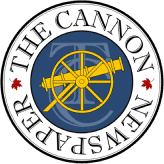Rick Liu
Cannon Editor-in-Chief
Articles published in The Cannon are solely the opinion of the author and do not reflect the position of EngSoc or The Cannon. This applies to all opinion pieces, written by writers or Cannon executives.
On September 20, the University organized a career fair in the Exam Centre. For many, including myself, it was not a pleasant experience. There were lines going past the Nursing Building, and it took roughly an hour for students waiting in line to get in the building. Once inside, the crowds were just as bad, with the atmosphere being hot and humid. Students could barely pass by one another, and the lines to talk to the employers, who were split across multiple floors, were enormous. Much of it was caused by students in unrelated fields lining up at every booth, since there was no information of which employers were looking for who. I personally observed a Life Sciences major lining up at the Arup booth, only to be told that Arup was primarily looking for Civil Engineers interested in structural or transportation design. The quality of employers were also questionable. While it’s understandable that for a career fair that caters to the entire school, there would be many non-engineering companies, many companies were clearly geared to software and hardware companies. In the 100 companies that were present, around 30% were software and hardware companies, while a surprising large number of companies were not geared towards full time or even PEY work, such as Tutor Doctor. There were very few companies catering to the policy, medical or finance fields that so much of the undergraduate are enrolled in.
On September 27th, students from around engineering collectively organized the YNCN Fall Career Fair. This career fair not only featured 70 engineering companies, including around 20 companies hiring for my discipline (civil engineering), but YNCN listed both on its website and at the event which employers were looking for each discipline. The venue, the Mars Building, is bigger than the Exam Centre, with space being easily navigable. Many top tier engineering companies, including Facebook, Proctor & Gamble, and Accenture had a presence at the career fair, and all companies were clearly looking for PEY and new grads. The YNCN career fair also had other benefits such as a LinkedIn photo booth, and onsite interviews for certain companies.
For most students, the question as to which career fair was better is obvious. YNCN had more top tier engineering companies, with less students, in a bigger venue, catering to all sectors of engineering. This has been the mission behind YNCN’s existence, which was partially created by students who were unsatisfied behind the services offered by the Engineering Career Centre. Ask any engineering student which of the two organizations offers the more comprehensive career fair, more detailed resume critiques, and more thorough panels, and it’s YNCN rather than the Engineering Career Centre. This is because students know what other students want the best, and are uniquely motivated and possess the experience and skillset to make this happen.
This extends way beyond the simple issue of which organization offers better career services. For most international students, their go-to to help them transition into engineering is their respective cultural club, such as the Indian Student Society or the National Society of Black Engineers, rather than the UofT International Student Center. For all the noise the administration makes about ensuring a vibrant student life and community to ease the transitions of students into engineering, clubs such as Skule Nite and Concrete Canoe are the ones who are actively creating a student life scene. For many students, it’s the quality of student clubs and services that exist to specifically cater to students that convince them to come to UofT. And the university realizes this; the advertising brochures and videos the university creates to attract high schoolers are filled with happy students building a concrete toboggan sliding down a giant hill or the dinner dances that are the biggest social events of the year, rather than endless facts about how UofT is home to one of the most comprehensive structural analysis facilities in the country.
For many of these services, their budgets are going to be significantly cut by the Student Choice Initiative. The final numbers aren’t out, but one club I’ve talked to has predicted a 30% cut to their budget. This article isn’t a plea to you, the student community, to opt in. Some students are going to opt out no matter what – that’s a fact. Rather, the university should recognize that most students rely on student services for a variety of reasons, and they perform a critical role that many people in the administration, most of whom are not engineering graduates, cannot fully grasp the context of as much as students themselves, and cannot organize as effectively as motivated students. The career fair saga is only the latest example of this.
As a current and former club leader for multiple clubs, I personally feel frustrated that the faculty constantly shows off the work made by student organizations, such as the next generation solar car roaring down the highways of Australia, or LGTQ+ students providing support to one another in one of LGBTOut’s events, without providing much financial support to these organizations. In the past, the bulk of the funding has been from student fees, which mitigated this funding issue. As the Student Choice Initiative comes into full effect however, the administration should realize rather than offering duplicate but lower quality services, they should increase their support of the organizations they’re proud to put on admission brochures sent around the world. The faculty’s upcoming round of Centralized Process for Student Initiative Funding, the faculty’s main mechanism for providing student funding, will test if that is the case.
